- Home
- Peter Matthiessen
The Cloud Forest Page 11
The Cloud Forest Read online
Page 11
The lapwings have followed me onto the moor, and their stridence is mixed with the gloomy honkings of the black-faced ibis, out of sight in some nearby gully; these birds, in chorus, sound exactly like a bored child playing with the horn of a toy car, and their odd noise, drifting downwind, is one of the atmospheric sounds of Patagonia. Sheep bleat somewhere, as if in answer to the ibis, and far off beneath a darkening sky a black horse trails slowly along behind a rise, pausing briefly to graze. It lifts its head suddenly into the wind and then moves on.
The following morning I arranged a ride with a delegation of chilenos bound for Río Grande, in Argentina, to witness a gran match de fútbol. (The main island of Tierra del Fuego is divided by a north-south line between Argentina and Chile; the latter country controls as well the smaller islands to the south of the Beagle Channel, including the Hermite Islands and Cape Horn. Staten Land, a large uninhabited island off the southeast tip, belongs to Argentina, and a few small islands at the east end of the archipelago are still disputed.) We traveled in the back of a large truck, some twenty strong, over the bed of which a tattered canvas had been rigged as shelter from wind and rain. There was nothing to be done, however, about the jolts of the dirt road or the carbon monoxide, both outstanding features of the ten-hour trip, and two young women promptly became sick; though the tailgate was near at hand, they did not avail themselves of the passing countryside but, with that odd passivity of peasant peoples, vomited dolefully where they lay. The Spanish are rarely sentimental about suffering, and, the occasion being a festive one, the girls’ misery provoked friends and family alike to shouts and seizures of uncontrollable mirth.
The sun and rain came and went all day, flying before the wind. From Porvenir we went south through a hilly country of scrub beech, turning east again at the shore of Useless Bay. The country changed to flat, dry, short-grass plains, and the truck was barely able to remain ahead of the dust cloud in its own wake, which, driven forward by the wind, caught up with us regularly on the turns. To the southward, out on the great empty bay, the whitecaps formed in cresting banks, and beyond, in the far distance, the Andean peaks, approaching their southern terminus at last, rose sharply on the sky. The highest of these are Mount Sarmiento and, much farther east, Mount Darwin, both of them over seven thousand feet.
The dominant bird of the open country is the lovely caiquen, or upland goose; in this species the gander is predominantly silver, while his mate is a lustrous cedar brown. These birds are incredibly common in Fuegian Patagonia—we saw many thousands in this single day. Wild duck seem relatively scarce, however, and only a few kelp gulls, lapwings, and small carrion hawks, or chimangos, braved the winds of this open country.
The wind increased during the day, with gusts of rain. At noon, canvas flapping, we paused to air the women. We were now near the head of Useless Bay, among the outbuildings of a large estancia. From here we moved inland, and the quality of the countryside gradually improved as we crossed large sheep ranches in the direction of the border. The latter was crossed late in the afternoon, and shortly thereafter we drew up at the Argentine frontier post, by the wide bay of San Sebastián, on the Atlantic. Here the wind had reached its peak, and while I struggled with the door of the customs shack it literally spun me in my tracks. Toward sundown, however, it relented somewhat. We were now in the heart of the sheep ranges, and on both sides of the road the animals moved away from us, drifting off across the blowing grasslands with their soft, rolling canter. Large flocks of geese rose, silhouetted, and dropped gently down again, and a large black-breasted hawk—the Chilean “eagle”—sailed out across a bluff to peer and slide away. The bluff sloped gradually, climbing to the cliffs along the coast; we were on the road to Río Grande now, the ocean a brittle froth out to the eastward. Between breaks in the cliffs the gravel beach was visible, and beyond it a wide stretch of rocks and pools uncovered by the tide. As in Porvenir, the shore birds here were common, and one huge flock of sandpipers danced ahead of us down the coastline, their white undersides flashing like fine confetti as they banked. Cape Domingo, falling steeply to the tide rocks, and ahead the twilight glint of buildings; a little later, honking and tooting at the baffled argentinos, we careened down to the mouth of the Río Grande, into the little town of the same name.
Río Grande owes its existence almost entirely to the sheep ranches, or estancias, which surround it; many of the seasonal herdsmen and shearers live in the town, bringing a certain income, and small freighters come here with food, gasoline, and other supplies, taking away raw wool and mutton. The freighters anchor in the river mouth and at low tide are high and dry on the cold mud flats. The recent development of oil in Tierra del Fuego will certainly increase the size of Río Grande, but for the moment it sadly lacks accommodations for the traveler. Its tiny “hotels” are scarcely deserving of this name, and as the same is true in Porvenir and in Ushuaia, on the southern coast, the hospitable estancias are besieged by stranded wayfarers; a night’s lodging can generally be obtained, but one will not be truly welcome, understandably, unless the visit has been arranged well in advance.
In Buenos Aires, happily, I had been introduced by Peter Deane to Señor Carlos Menendez Behety, who was kind enough to give me an invitation; I arrived at the Estancia María Behety just at dark. Because of the uncertainty of travel in Magallanes, I was already four days late, and, standing there on the doorstep with my motley bag and knapsack, caked with dust, I was not all that might have been wished for as a guest.
The main house of the estancia is large and handsome and surrounded by lovely gardens; this island in the sea of grass is protected from the wind by a wall of tall white palings which surround it. Down the hill lies a complex of ranch buildings, which were shown me after dinner by Señor Menendez’s nephew, Jaime Speroni. There are stables for horses and for breeding rams, corrals, great shearing sheds, storehouses, electric plant, mess hall and dormitories for shepherds and shearers, the house of the capitaz, or ranch foreman, and so forth, all of these luminous in the bright darkness. In these latitudes, so near to the Antarctic, summer darkness is never total; there is only a deep shadow on the land, and the sky reels with explosions of southern galaxies. I took a long look at the unfamiliar stars, the brightest group of which forms a gaunt pattern which gives a three-dimensional sense of the Crucifixion. This is the Southern Cross.
The Estancia María Behety, which includes 50,000 hectares, or well over 100,000 acres, of land, was established in the last part of the nineteenth century, when it was called “La Segunda Argentina.” Together with its neighboring ranch, the Estancia José Menendez (“La Primera Argentina”), it comprises the largest family holding in Argentine Tierra del Fuego. The next in size is the Estancia Viamonte, adjoining José Menendez to the south; this ranch, established just after the turn of the century, is owned by the Bridges-Reynolds family, who also have another large property at Harberton, on the Beagle Channel. The Bridges family moved north from their mission settlement at Harberton, while the Menendez came originally from Chile. Though the two families differed somewhat on their policies toward the Indians—a Menendez foreman of the early days is said to have put a bounty on dead Onas, whereas for many years this tribe supplied both ranch hands and shearers at Viamonte—there was also a good deal of mutual respect, and eventually they joined forces to construct the first bridge over the Río Grande. It seems appropriate, too, that The Uttermost Part of the Earth, by Lucas Bridges, and the Pequeña Historia Fuegina, by Dr. Armando Braun Menendez, remain the most authoritative books on the history of the region.
The Río Grande lies a few miles southward of the ranch buildings at María Behety, under a steep, dry bluff. With Jaime Speroni, I went there the morning after my arrival, crossing the rolling plain on horseback. The day was bright and cold, and the wind, buffeting over the treeless land, seemed strong enough at times to snap a rider right out of the saddle. Caiquen geese were everywhere, and forlorn-looking sheared sheep with a red smear of paint across the r
ump, and here and there, cut down by the inevitable .22, the remains of a goose, gull, or chimango, feathers bending in the wind. (That afternoon the Menendez children and their cousins were kind enough to take me for a tour along the seacoast. Among other things, we saw a Magellan penguin, and I am sorry to report that this attractive bird was destroyed by a fusillade of .22 fire almost before I could admire it in my binoculars. Three caiquenes also bit the dust and were left where they lay. The caiquen, it is true, is destructive to sheep range, for not only does it eat great areas of grass—five caiquenes will eat as much as a single sheep, according to Carlos Menendez—but its guano “burns” a good deal more. Nevertheless, the indiscriminate shooting of a few birds is useless, and probably the solution lies elsewhere. The geese may have prospered unduly due to man’s persecution of a coyote-sized red fox native to Tierra del Fuego, which attacks lambs as well as caiquenes; it is doubtful, however, whether its sporadic kills outweigh the damage caused by the excess geese. Interference with the balance of nature, as well as the senseless killing so common on this continent, were primary factors in the decimation of wildlife in North America and are making their mark here, a half-century later. To the credit of the Menendez, however, it should be said that the disappearing guanaco receives full protection on María Behety, a precocious step by local standards.)
The Río Grande, like other streams in Tierra del Fuego, has been stocked with brown and rainbow trout, and here the latter reach the size of salmon; fish of fifteen pounds or more are not uncommon, and much larger individuals have been taken. The river today was roiled and swift, running low between its banks, and from a gravel bar ahead of us a pair of blacknecked swans rose up in slow motion against the wind and moved powerfully away upstream. These beautiful birds are native to Patagonia, but of recent years have apparently declined in numbers.
Downstream, by the river bank, stood a lone beech, the only native tree on the estancia. The aspect of the land is bare but it is not barren, and its very bareness, when the sun is bright, is stirring. Formerly the earth of the open range was honeycombed by burrows of the tucu-tucu, a tailless rodent like the guinea pig, but these animals have been virtually eliminated by the myriad hoofs of sheep and horses—María Behety supports sixty thousand sheep, a number of horses, and a few wild guanacos—and now the land is ideal for riding. The earth is grassy and resilient, and on the homeward ride, downwind, we cantered easily along for miles. The ride was immensely exhilarating, and it seemed to me at that moment that, without a horse, one could not get a true sense of Patagonia.
There are neither trains nor buses in Tierra del Fuego, and, except for scattered plane flights between Río Grande and Ushuaia, one must depend for transportation on the hospitality of the frontier. In my case this courtesy was extended by George Blackwell and the men of the Tennessee-Argentina Oil Company, with whom I spent a most agreeable morning before leaving on a truck bound southward for Ushuaia. Oil has been found in quantity in Chilean Tierra del Fuego, and the Tennessee-Argentina Company now has a twenty-five-year lease on the Argentine side, where it has already brought in several wells. The personnel here are tough and friendly, and I’d like to say that, despite an indefensible tendency to avoid my countrymen when traveling (doubtless related to what Maugham has described as the hatred of one tourist for another, though these drillers and construction men can hardly be classed as tourists), there is a special kind of American honesty and “openness,” an ability to laugh at oneself, which can be extremely refreshing after a long time without it.
The truck left in mid-afternoon, crossing the Río Grande and passing almost immediately the large freezing plant and warehouse used by the estancias in the area. To the east rose Cape Peña, where once, long ago, the forceful Scot known as “the King of Río Grande,” leading a raiding party, slaughtered some fourteen Ona caught on the beach while sealing. (Seals were once common at Cape Peña but, like the small South American sea otter, are now scarce on the coasts of Tierra del Fuego.) The day was dark, and as we bounced southward on the rutted road, patches of scrub beech on the accumulating foothills broke an oppressive landscape, gathering in small woodlands behind Viamonte. Between the hills ran long, winding open valleys known as vegas, and in some of these were narrow, rapid streams. The carancho, a large dark caracara, replaced its smaller cousin, the brown chimango, as the country changed, and its presence suited perfectly the ominous terrains.
We entered unbroken forest, wind-bent and sad with its thick wisps of “graybeard,” or Usnea lichen; the trees carried also on their outer branches a round, parasitic cluster very similar to mistletoe. Then the road emerged on the east end of Lake Fagnano, a body of water in the Fuegian foothills of the Andes which extends from this point more than forty miles to its western extremity in Chile. The edges here are clotted with forests of dead trees, victims of flood caused by earthquake. The wind today had diminished very little, and the lake was rough and desolate. Between here and the island’s eastern point, a hundred miles away, the glaciers and mountains are still largely unexplored; this is also true of some of the larger islands of the archipelago, to the southwest.
On the south shore of the lake we met Oliver and Betsy Bridges, bound homeward from Ushuaia; they had a welcome fire and water boiling, and in this strange place I delivered a note from mutual friends, Ted and Dorry Blacque in Bolivia. With the chileno truckdriver and an Argentine passenger, I accepted their kind invitation to stay to tea and to stop off at Viamonte on my return.
Climbing the lumber road into the mountains, the truck passed a few woodsmen’s huts and camps; the driver invariably honked the horn, as if to give these lonely men some reassurance that an outside world still existed. The trees increased rapidly in size as we gained altitude, some of them reaching one hundred feet or more; the curious thing here is the amount of deadwood, which makes the forest floor almost impassible. Darwin, who imagined that Tierra del Fuego consisted entirely of this forest, was decidedly oppressed by it:
On every side were lying irregular masses of rock and torn-up trees; other trees, though still erect, were decayed to the heart and ready to fall. The entangled mass of the thriving and the fallen reminded me of the forests within the tropics—yet there was a difference: for in these still solitudes, Death, instead of Life, seemed the predominant spirit.
At dusk the mountain crags were gloomy in dying clouds. Darkness came on swiftly, and the snow on the sharp peaks and distant glaciers became dim and amorphous. In the close forest of the ravines the truck ground and slipped and stalled on the steep, rough road; we inched along, hour after hour, crashing and lumbering through rain pools. Then the descent on the far side began—the mountains are not high here, but precipitous—and after midnight, a little numb, we careened into Ushuaia. The Gran Parque Hotel—as hostels go, the showplace of the town—was dank and crowded, but at last provided cots for myself and an Argentine companion in the dining room. (The following night I was lucky to get a bed at all, but lay down finally on a pallet placed next to the bed of no less a person than the genial patrón: the little room, having no window on the open air, was a little more close than I would have liked, but I was no less grateful to him for all of that.)
The settlement of Ushuaia on the Beagle Channel in 1869 was the white man’s first successful foothold in southern Tierra del Fuego, all prior attempts having ended in famine, or massacre by the Yahgans, or both; the most disastrous episode, at Wulaia Harbor ten years earlier, had cost the lives of every member of the missionary party except the ship’s cook. The chief instigator of this massacre, apparently upset that he had not been accorded the special privileges due him as interpreter and world traveler, was Jemmy Button, on whom Darwin and Captain Fitz Roy of the Beagle had based their hopes for improvement of white-Indian relations. In 1871 Deacon Thomas Bridges of the Tierra del Fuego Mission Society brought his young wife to Ushuaia, and the town has since become the government seat of Argentine Tierra del Fuego.
These facts and many others ar
e available in The Uttermost Part of the Earth by Lucas Bridges, son of Thomas Bridges and uncle of Oliver Bridges, whom I first met on the shore of Lake Fagnano. The book includes excellent photographs of the Yahgan and Ona Indians, whose painful redemption at the hands of the white man was concluded within half a century by their almost complete extinction; the warlike and troublesome Onas of the north were swiftly reduced by the ranchers of the Río Grande region and by savage inter-family vendettas, but the fatal agent in the destruction of both tribes was the diseases of their saviors, notably measles. The seven to nine thousand Indians thought to inhabit Tierra del Fuego at the time of the settlement of Ushuaia were reduced eighty years later to fewer than two hundred pure-breds; today not more than one hundred Alacalufes eke out an existence in the Chilean islands, and the Yahgans and Onas, a handful of old people excepted, are gone.
Thomas Bridges spent his life among the Yahgans, and his journals conflict with Darwin’s account on several points—for example, that their speech was ugly: on this point Darwin must have confused them with the Onas. The Yahgan tongue was fluid and complex, and Bridges constructed a remarkable Yahgan–English dictionary which was subsequently “borrowed” and pirated by the notorious “Dr.” Frederick A. Cook, better known as the man who laid false claim to having discovered the North Pole: Cook attempted to publish the dictionary as his own work, but was apprehended in time. Nor was it true, apparently, that the Yahgans were cannibalistic. Occasionally they put to death old people of the tribe, but this ceremony, known as tabacana, was apparently a kind of euthanasia, or mercy killing; to judge from the terrible circumstances of their existence, compounded by a unique degree of brutality and treachery, tabacana might more charitably have been applied at birth.

 Lost Man's River: Shadow Country Trilogy
Lost Man's River: Shadow Country Trilogy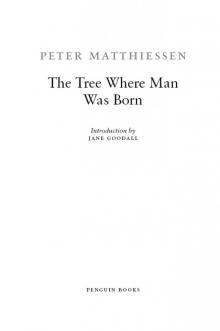 The Tree Where Man Was Born
The Tree Where Man Was Born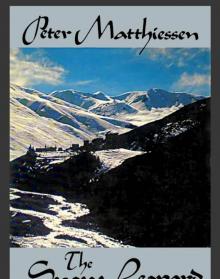 The Snow leopard
The Snow leopard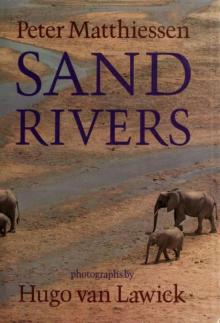 Sand Rivers
Sand Rivers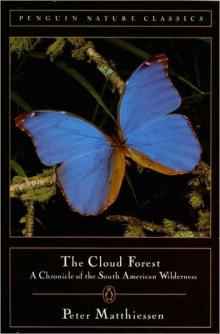 The Cloud Forest
The Cloud Forest Sal Si Puedes (Escape if You Can)
Sal Si Puedes (Escape if You Can) Far Tortuga
Far Tortuga Men's Lives
Men's Lives On the River Styx: And Other Stories
On the River Styx: And Other Stories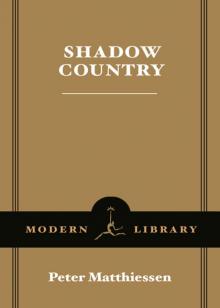 Shadow Country
Shadow Country At Play in the Fields of the Lord
At Play in the Fields of the Lord Lost Man's River
Lost Man's River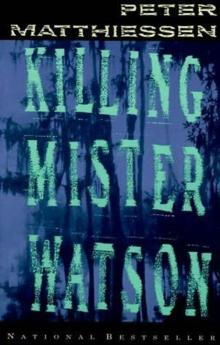 Killing Mister Watson
Killing Mister Watson On the River Styx
On the River Styx